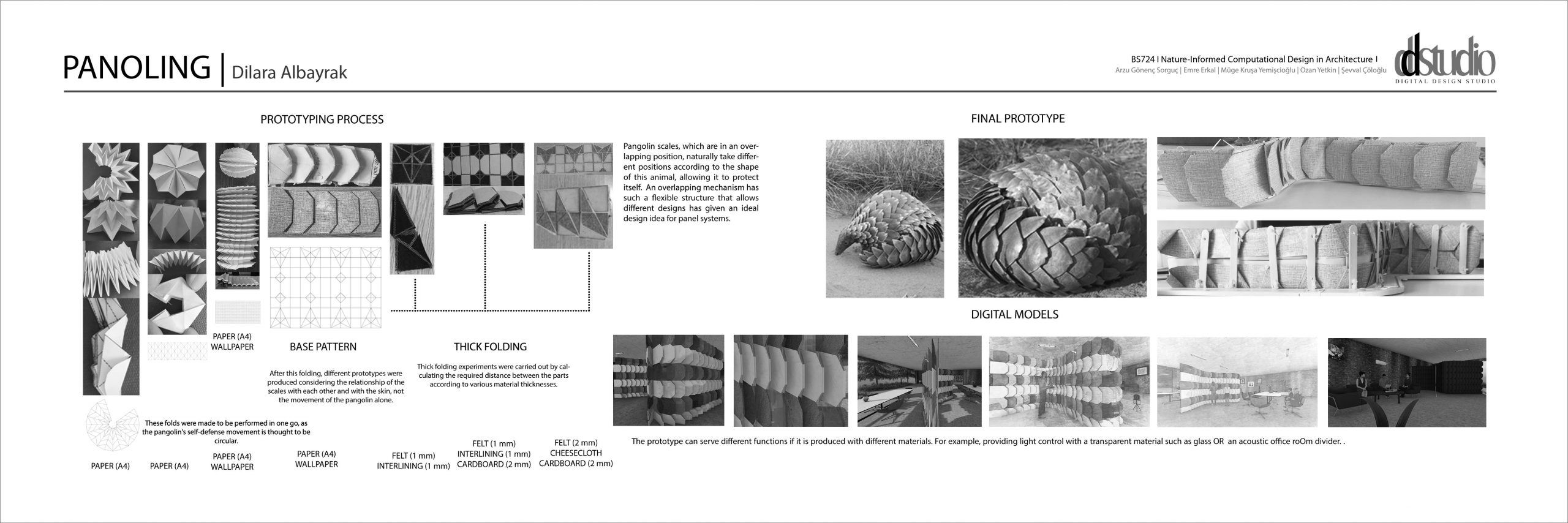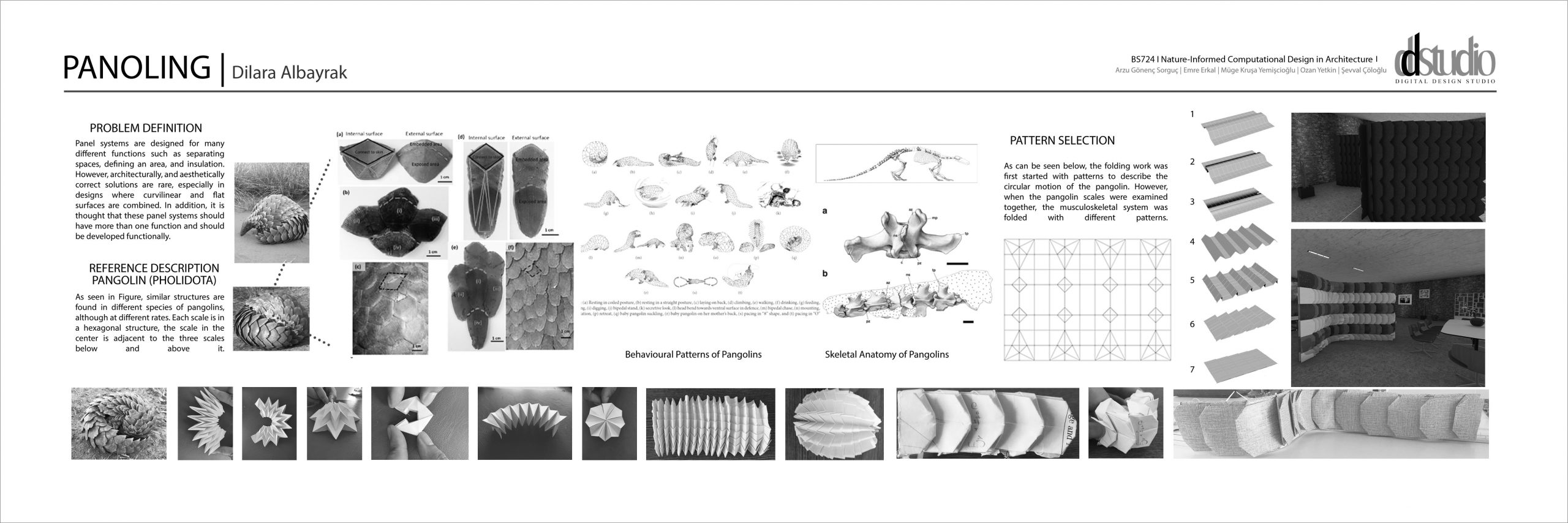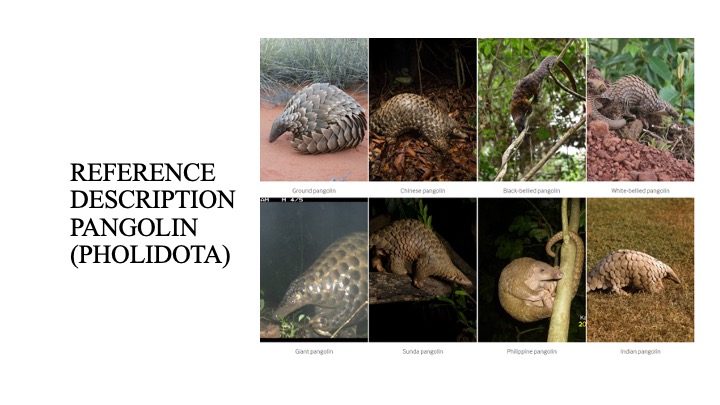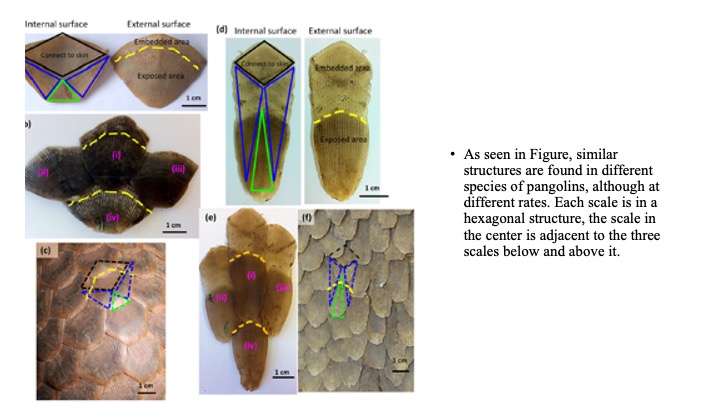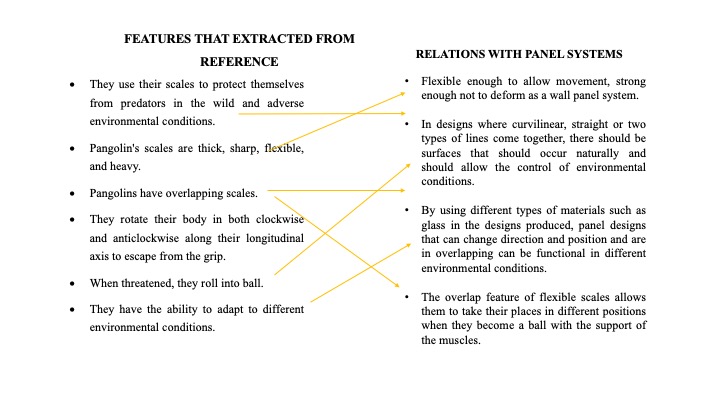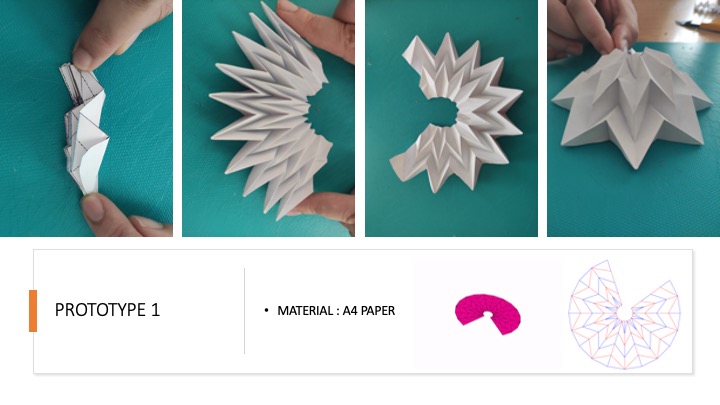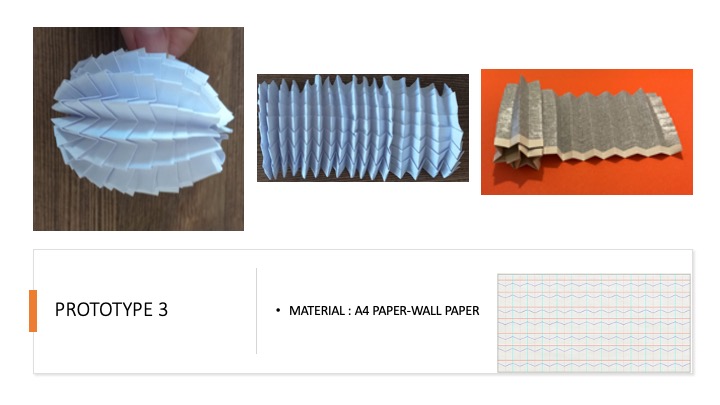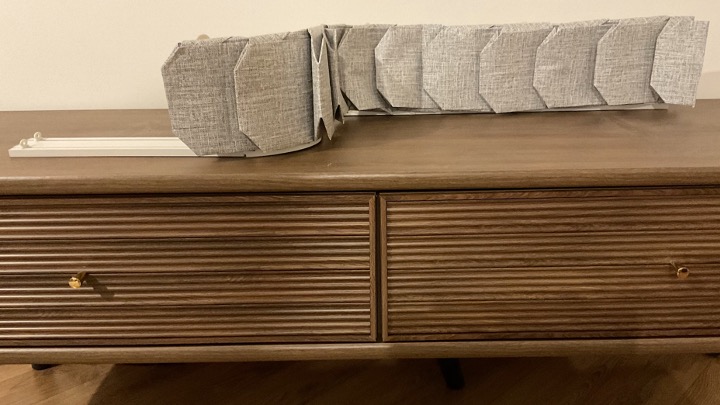Dilara Keçeci
2022 Spring
BS724 Nature Informed Computational Design in Architecture
Panel systems are designed for many different functions such as separating spaces, defining an area, and insulation. However, architecturally, and aesthetically correct solutions are rare, especially in designs where curvilinear and flat surfaces are combined. In addition, it is thought that these panel systems should have more than one function and should be developed functionally.
In cases where wall panel system designs follow different linear lines, it is aimed to naturally adapt to that line and to undertake functions such as light control when necessary. The only mammal known in nature for its flexible scales, the pangolin is protected from predators by turning itself into a tight ball with the help of its muscles and skeletal system in case of danger. During this protection, their sharp, flexible and powerful scales are controlled and directed by their muscles. Thus, pangolin scales, which are in an overlapping position, naturally take different positions according to the shape of this animal, allowing it to protect itself. Especially after the prototypes were made, the orientation movement of the scales in different positions played an important role in defining the problem. The fact that an overlapping mechanism has such a flexible structure that allows different designs has given an ideal design idea for panel systems.




